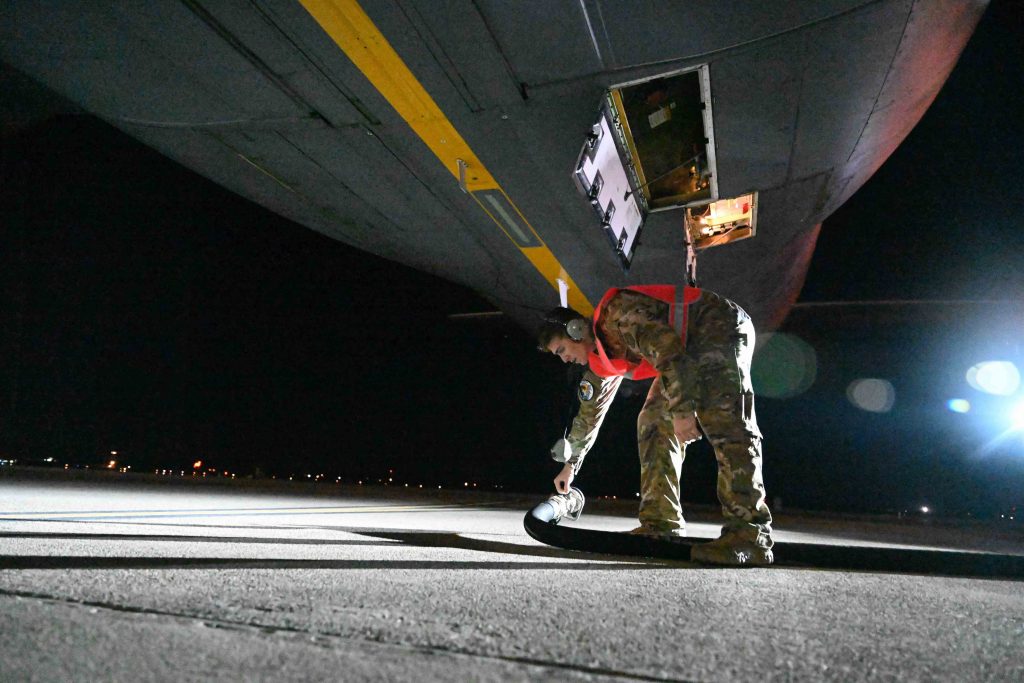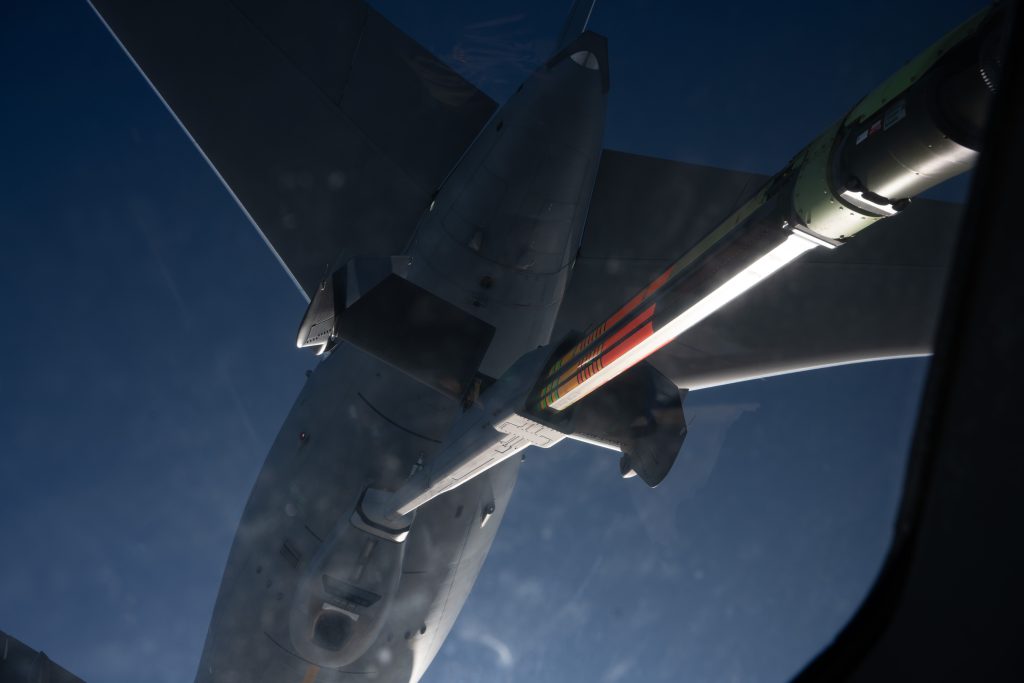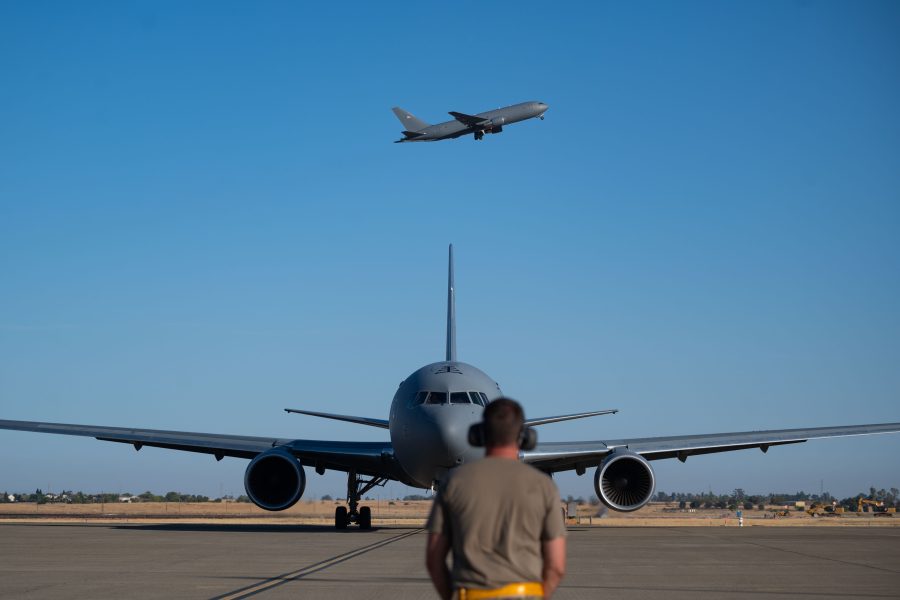In the face of emerging threats around the globe, the U.S. and allies are rapidly growing aerial refueling capability to meet the challenge. As the KC-46A global fleet has more than 90 aircraft with tens of thousands of flight hours in aggregate, operators are optimizing operational concepts, accelerating preparation for sustainment logistics in a contested environment and driving evolutionary capability upgrades to outpace peer threats.
“Now that KC-46 has been in service for a few years, the young men and women who fly and maintain the aircraft are capitalizing on all the knowledge and experience they’ve gained to generate innovative ways to employ and maintain the fleet,“ said Sean Liedman, director of Global Reach for Boeing Defense, Space & Security’s Mobility, Surveillance, and Bombers division. “There’s an opportunity to improve the efficiency of our sustainment posture with all of the data that’s been garnered over the course of its service.”
Maximizing Fleet Efficiencies
It all starts with learning from KC-46A operations in the field to advance mission readiness for the future fight. A good example is the recent contract that the Air Force awarded to Boeing for KC-46A software and data enhancements for more efficient flight planning. These improvements—based on information gleaned from years of crew experience with the platform’s cargo loading and takeoff and landing data management—further advance the mission readiness and performance envelope of the world’s most advanced multimission tanker.
“The U.S. Air Force and allies are performing crucial global missions with the growing KC-46A tanker fleet and finding ways to extract more capability from the platform,” said Lynn Fox, KC-46 vice president and program manager. “We’re collaborating to integrate enhancements like these and bring additional capabilities to the battlespace as rapidly as possible to meet the evolving needs of the mission.”
Strengthening Sustainment
With growing knowledge of the platform based on thousands of flight hours and maintenance checks, there are also opportunities to fine-tune initial maintenance parameters in order to optimize KC-46A fleet sustainment. As the Air Force leads on organic sustainment of the fleet, there are innovative ways to implement predictive maintenance and supply chain logistics methodologies to ensure the fleet is at the highest level of readiness.
Honing sustainment with the fleet today accelerates the path for solutions to future challenges such as logistics in contested environments.

That challenge intensifies as battlespace capabilities become ever more advanced. Consider software sustainment. Under a recent contract from the U.S. Air Force, Boeing is supporting these efforts by developing a Systems Integration Laboratory supporting software maintenance and sustainment for the KC-46A weapons system. As part of Boeing’s contracted support, Oklahoma City Air Logistics Complex at Tinker Air Force Base will be equipped with the necessary infrastructure and resources for advancing the Air Force’s organic sustainment of the tanker’s mission systems.
“This new capability will play a vital role in supporting the USAF’s mission and maintaining the cutting-edge technology of the KC-46A,” said Janelle Bakke, KC-46 Support and Training Program Manager.
Rapid Evolution
With more than 90 KC-46A tankers in service for the U.S. Air Force and allies, the Pegasus is already delivering crucial multi-mission capability around the globe, including connectivity and battlespace awareness that are unprecedented in a tanker.
As Air Force and allied operators continue to prove out the current capabilities of the KC-46A, they can also rapidly test and integrate new capabilities to continuously evolve the platform to stay ahead of peer threats.
Indeed, the world’s most advanced aerial refueler also offers a testbed for further advancing evolutionary aerial refueling capabilities.
The KC-46A Block 1 upgrade does just that, further enhancing the data and communications connectivity the Pegasus provides with additional line-of-sight and beyond-line-of-sight communications technologies including antijamming and encryption features.
Boeing continues investing in new capabilities and emergent technologies to ensure future KC-46A operational effectiveness and mission readiness into the future.
Threats Around the Globe
Continuing to advance the in-service and in-production KC-46A delivers the maximum aerial refueling capability along the fastest, most affordable timeline for the warfighter.
“We’re laser focused on continuing to deliver capacity and new capabilities into the field as rapidly as possible,” said Liedman, “because we know the U.S. and allies can’t wait.”

As the U.S. Air Force analyzes next generation aerial refueling systems requirements, the KC-46A Pegasus is advancing aerial refueling capabilities, operational concepts, and logistics for contested environments with aircraft that are in operation right now—and paving the path for the future of multi-mission aerial refueling.
